Prioritise cycling and walking to improve Cheltenham Air Quality
The Cheltenham and Tewkesbury Cycling Campaign responded to the 2022 Cheltenham Borough Council consultation on its air quality action plan.
Traffic is the main source of emissions impacting people, across the arterial network of roads through Cheltenham.
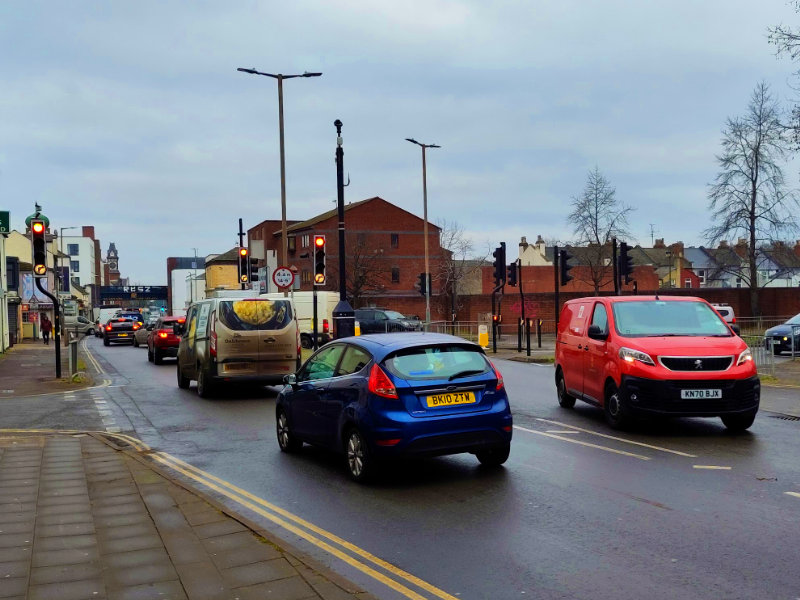
With motor vehicles being a major emission source in Cheltenham for both NOx and PM, increasing rates of cycling would be one of the most rapid and effective ways of improving air quality within our urban area.
Cycling offers an accessible mode of travel that can replace many short journeys of one to three miles, and through reducing short-trip congestion, offers benefits to improving reliability of public transport and other modes of transport.
We made the following comments on the proposed plan.
1) The Cheltenham Air Quality plan prioritises electric vehicle initiatives over active travel for improving air quality.
These cannot equitably solve the challenges the council is facing within reasonable timescales. Electric vehicles are generally heavier, can present greater road danger, and still emit significant particulate matter from tyre and brake wear. We believe the strategy should instead adopt a clear hierarchy of measures, beginning with walking and cycling, rather than assuming very little modal share can be achieved.
2) The Local Cycling and Walking network the plan relies on is inadequate.
Our assessment is that the Local Cycling and Walking Infrastructure Plan for Cheltenham, which the air quality plan relies on to deliver change, is incomplete and out of date.
It omits several significant desire lines, particularly from the north west and south east of Cheltenham, and includes no meaningful cross-centre connectivity. As shown below, it proposes no route suitable for those currently travelling through Poole Lane from east to west trips.
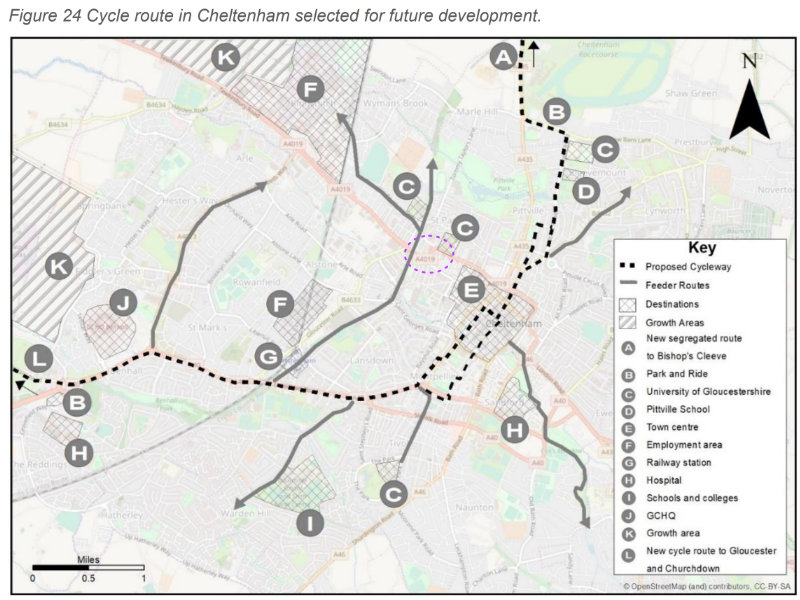
There needs to be co-produced work now to progress Connecting Cheltenham to develop a truly ambitious plan for cycling in Cheltenham, and a plan for implementation.
3) Level of cycling service will be further compromised if motor vehicle traffic flow is made the priority
We note the particular challenge of the area of exceedance surrounding Poole Way and its connection to the Lower High Street. The proposals to improve traffic in this area also need to acknowledge that the east-west corridor represents a major bottleneck to cycle routes into the town centre.
Increasing vehicle speed or capacity should not be allowed to further increase hostility to cycle users in this area.
The campaign has asked to be involved in any process that attempts to address traffic levels in this area.
4) There are simple opportunities to reduce motor vehicle trips to the Royal Mail site
A small, initial intervention would simply be to provide appropriate cycle parking and access for the royal mail depot and collection point, which currently offers no active transport opportunity.
There is also opportunity with the neighbouring mini-holland scheme being developed by Gloucestershire County Council to simplify motor vehicle flows by reducing the substantial traffic flows into Swindon Road and Townsend Street, reducing idling times and junction phasing.
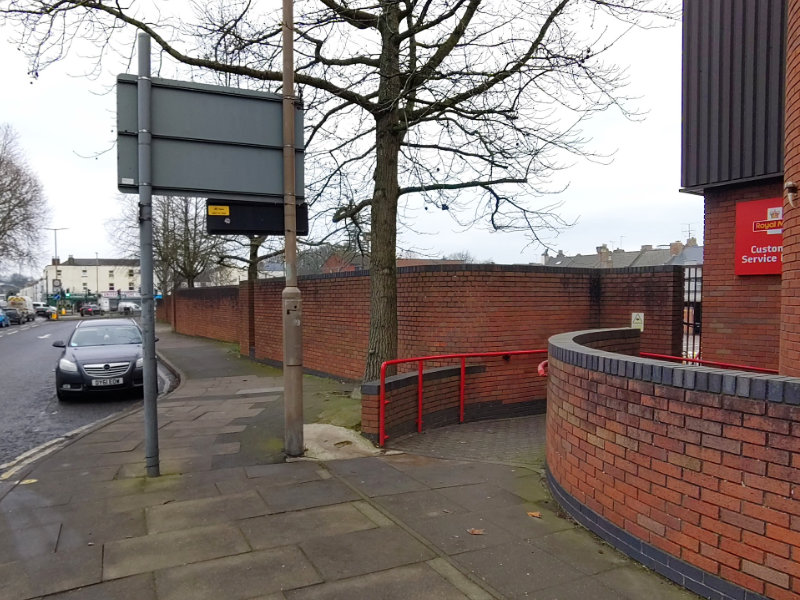
5) Isolated education campaigns will not cause stepwise change in cycling levels
The report also references Cheltenham General Hospital. As previously highlighted in our consultation response to the Connecting Cheltenham, the hospital lacks convenient and direct cycle connections, particularly from Back Montpellier Terrace along Sandford Road.
An education campaign targeting the local NHS acute Trust will not be successful without enabling measures to support modal shift on key transport corridors to the site.
6) Progress on school run modal shift has stalled
We believe the plan would be improved by specifically considering ‘school-run’ sources of congestion, which receives only brief reference around education campaigns.
With the pausing of further rollout of Gloucestershire County Council’s school streets programme, we see a significant gap in plans to address the air quality challenge that these short trips create. The council should include a clearer statement on how it believes school-run motor vehicle traffic can be reduced, and the practical support beyond education that it could offer to schools who want to enhance their active travel offer.
7) Cheltenham Council can deliver infrastructure beyond Gloucestershire County Council actions
The action plan places all responsibility for improving cycling infrastructure on Gloucestershire County Council. We suggest that Cheltenham Borough Council needs to recognise the very significant assets it has within its own control, and that it can take steps to improve routes away from the highway network, particularly through upgrading park routes, removing barriers that exclude the full range of accessible cycles, and substantially increasing secure cycle parking availability across retail centres.
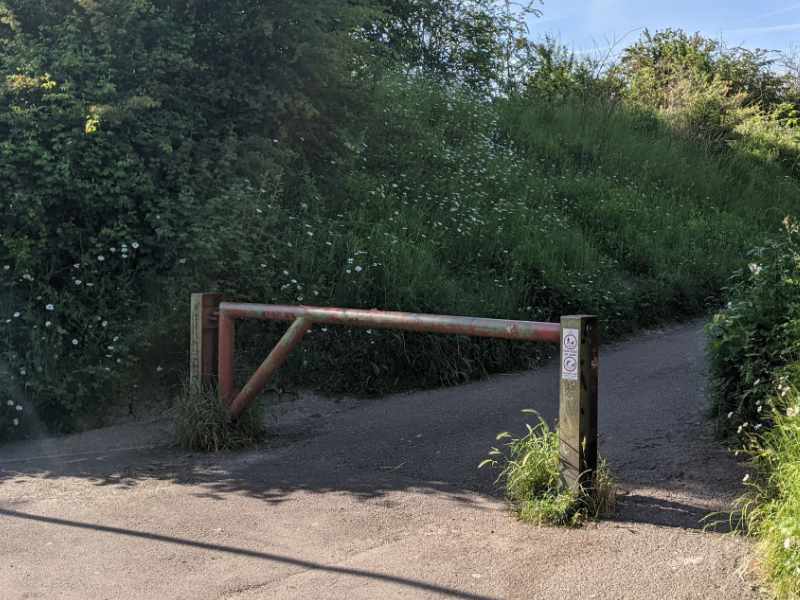
8) The Honeybourne Line needs more investment
The council also needs to recognise the very significant role the Honeybourne Line will play in any future mobility plan, and that the current shared space arrangement is already struggling to support meaningful cycle speeds. We encourage Cheltenham Borough Council to focussed dialogue with Gloucestershire County Council on a clear maintenance and upgrade pathway, recognising the role of this key link within the highway network for non-motorised vehicles.
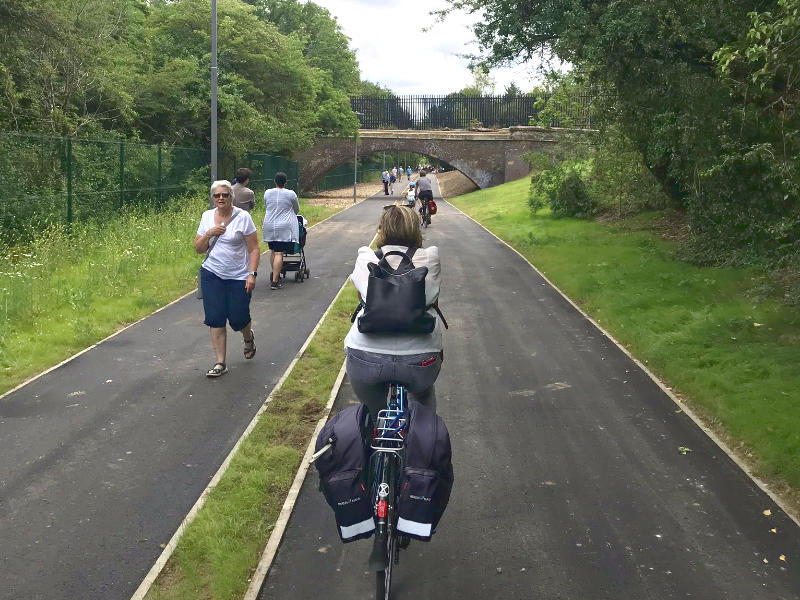
Making it better may make Cheltenham air quality worse
Overall, we believe that to improve air quality, a significant number of private motor vehicle trips need to be replaced by sustainable transport. The current plan will not deliver this.
There is a major risk that the plans focus on attempting to improve traffic flow and speed will paradoxically induce additional trips through increased motor vehicle convenience, leading to further deterioration in air quality and more adverse conditions for cycling.
To truly reduce transport emissions, the evidence shows that bold steps are required to significantly reduce motor vehicle dominance.
Whilst this will inevitably require greater collaboration with Gloucestershire County Council, the campaign believes there are interventions where Cheltenham Borough Council can show meaningful leadership, and we have expressed the hope that Cheltenham Borough Council will work with the Cheltenham & Tewkesbury Cycling Campaign as it moves the plan forward.
